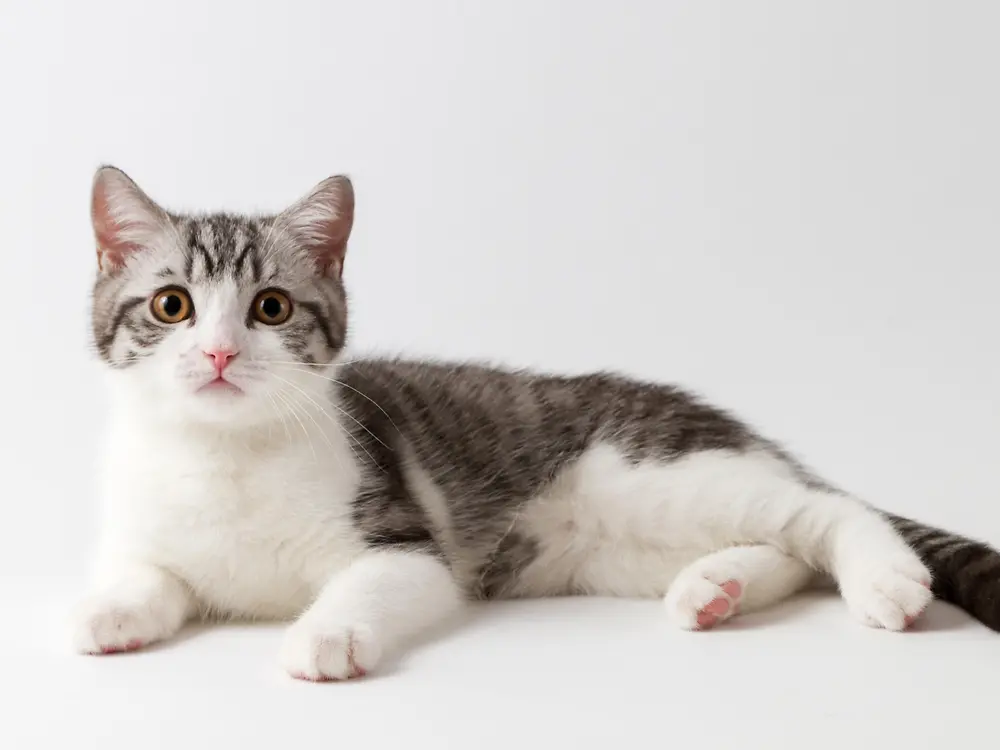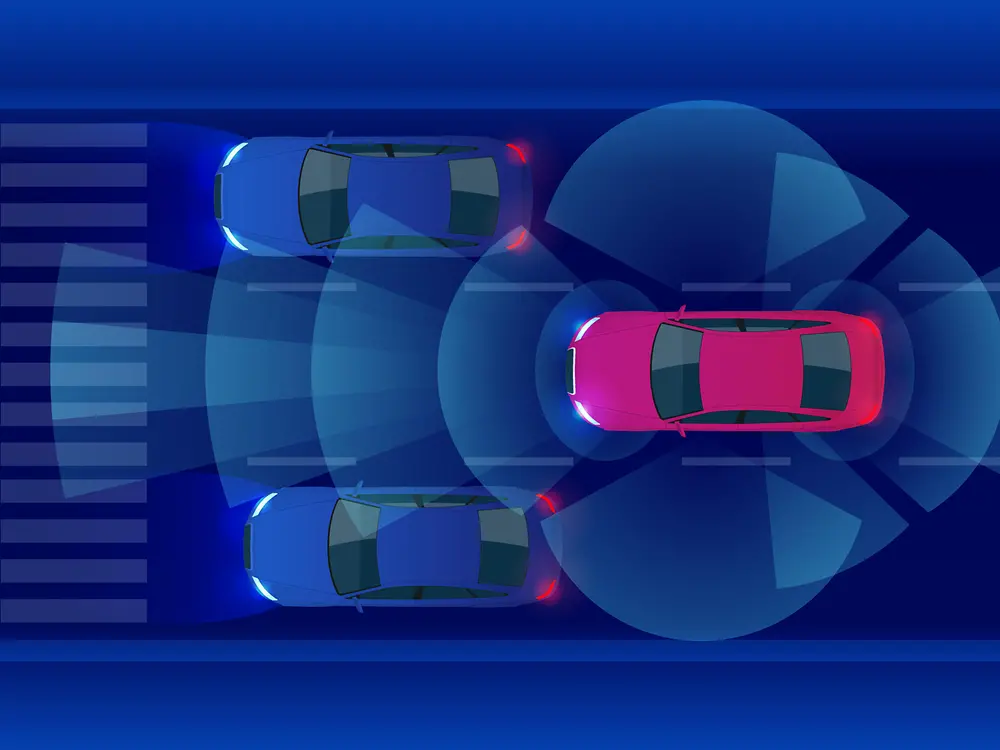Artificial Intelligence – What it is and how it is being used
The term Artificial Intelligence (AI) might make you think of science fiction and human-like robots taking over the world. But what exactly is behind it? Even today, smart technologies can personalize the experiences we make with products. In industry, "Machine Learning" – one part of Artificial Intelligence – helps to optimize production processes. Artificial intelligence has long since ceased to be just a future vision.
Forms of Artificial Intelligence are for instance:

Do you remember the fairy tale of Hansel and Gretel? To avoid getting lost in the woods, they left a trail of white pebbles behind. With each search on the internet, each GPS activation on the phone, each like and friend connection on Social Media, we leave a trail of data behind. And that is what AI feeds on. Like with most “new” things, people tend to get worried when they hear the term Artificial Intelligence and its implications. When the industrial revolution came, people thought they would lose their jobs to machines. Now that machines can learn, people fear for their jobs once again. But Artificial Intelligence is not here to replace humans. It can strengthen our abilities, improve the products we already use, and make our lives more convenient. Here’s how:
“Artificial Intelligence” explained
For humans, it is very easy to understand the contents of an image. Imagine you just learned what a cat looks like. You will recognize cats no matter in what shape, size, color or pose they come in. For a machine the task is more challenging. All the computer sees are numbers. In this case, normal software would fail, which is where Artificial Intelligence comes in. This is how it works:
“Artificial Intelligence (AI) is the ability of a machine to copy the way our brain processes information – by mimicking functions of the human mind, such as learning, reasoning, problem solving and even interacting with the environment,” explains Jan Schäfer, Data Science Engineer at Henkel. “The computer processes data, detects patterns and generates an output through systems that are called algorithms – a sequence of different rules in computer language that solve problems.”
The machine recognizes patterns and replicates behavior. Interestingly, the algorithms are nothing new, but recently, processing power has increased, allowing AI to accelerate. Yet the most important component for a successful AI is data. “I would say 80 percent of the effort to create an AI is to access and get the needed data,” explains Schäfer, one of eight data scientists who supports Henkel’s business units and functions when it comes to AI topics.
Artificial Intelligence in practice
One of Henkel’s AI projects is Schwarzkopf Professional’s SalonLab, an ecosystem for hair salons of the future. “With SalonLab, we are redefining the way both hairdressers and their clients are experiencing beauty in the hair salon,” explains Dr. Nils Daecke, Head of Digital Marketing at Henkel Beauty Care. “At the same time, we are laying the foundation for disruptive, data-driven business models, which build upon consumer insights and hair properties.”
Around 10,000 hair samples were scanned, colored with different Schwarzkopf Professional products in different shades, and scanned again. Thanks to machine learning and the vast amount of scanned input, the computer is able to predict how the customer’s hair will look when a certain product is used. With augmented reality, the SalonLab Consultant App then brings the “output” to life, showing the customer what he or she will look like after using a certain coloration.
When Artificial Intelligence meets the Internet of Things
AI can become even more powerful when it is combined with other technologies like the Internet of Things (IoT). This term describes inventions which make use of online data and allow us to control devices like radiators, refrigerators or shutters via the internet.
In 2017, Henkel launched HomeControl, the world’s first IoT anti-mosquito device which also uses AI. It enables consumers to protect their home against annoying mosquitos – no matter where they are – by automatically diffusing a substance in the room. HomeControl also includes a special feature: the so-called “Smart Mode.” Innovation Manager Robert Ruiz-Hernandez explains why that is so special: “There are two factors: Our device uses data from its environment that it gets from the user – for example information about the room size or the presence of insects. And it has access to an online weather forecast that includes mosquito density in the specific area.” Based on both sources, Artificial Intelligence calculates the appropriate dose of insecticide to keep mosquitos away.
Facts & Figures: AI
How Artificial Intelligence enables Autonomous Driving
The vision for future cars goes something like this: They will be electric and sustainable, but also intelligent, connected and digitally operated. They will even be able to transport passengers to their chosen destination on autopilot mode. From electric power steering through emergency brake assistants to automatic parking aids, electronic helpers today are already responsible for a more comfortable and, most importantly, safer drive. And soon cars will drive fully on their own.
“The computing power is going to be enormous,” said Michael Todd, Head of Innovation at Adhesive Technologies, “much more than you find today in a normal house, or even in a normal office”. In the future, a standard car will need up to 100 mini computers, which help to run the engine, entertainment system, sensors and more.
Research is making progress in the field of picture recognition. Advanced Driver Assistance Systems (ADAS) recognize bicycles and pedestrians even when the road is wet and reflective. Besides identifying and alerting the driver to objects, signs and lanes, these systems can also take over braking and steering if needed. The underlying technology is AI, which receives its data from cameras, radar, lidar and ultrasonic sensors.
All these instruments need advanced material solutions to work reliably: They must be bonded, connected and protected. For instance, the cameras contain specialized lenses which must be attached in so-called lens barrels. A special bonding adhesive makes this possible. Another example are printed inks which can be used for crossovers, contact protection and other purposes in ADAS.
How will autonomous vehicles transform our cities? | Nico Larco | TEDxCollegePark:
Driverless vehicles, robots and drones – smart technology in production
Artificial Intelligence also makes production safer and more efficient. An impressive example is the replacement of conventional forklift trucks with Automated Guided Vehicles (AGVs). “The vehicles get their commands directly from a superior computer system”, explains Johannes Holtbruegge, Senior Manager Digital Transformation at Henkel. “It tells them for example, that material needs to be transported from the warehouse to the production line. The AGVs then drive the entire way by themselves.” To program the optimal way through the factory, the building was carefully scanned beforehand. At critical points where the vehicles could for example easily collide with people, reflectors were mounted. The AGV has laser scanners, which then point it in the right direction. This increases work safety.
Another example of intelligent technology are smart packaging robots. Conventional packaging machines require about two to four hours for a full changeover if they have to produce different containers in succession. The clever robots, however, can manage this conversion in less than half the time if properly designed. Thus, they create a boost in efficiency.
Drones are not only gaining popularity in the filmmaking industry but also in production and logistics. The smart flying objects whiz through the air, of course, autonomously. Equipped with scanners, they jet through the warehouse and check the inventory. The drones are connected to the accounting system in real time. Also, the floating devices are able to recognize the quality of storage.
The application possibilities for Artificial Intelligence are endless and have already arrived in many industries and households. AI supports people with specific tasks, but it is not a replacement for humans. Instead of worrying about the future, why don’t we embrace new technologies and find out how they can make our life easier?
Artificial Stupidity
Sometimes AI goes wrong. Here are some funny fails:






















